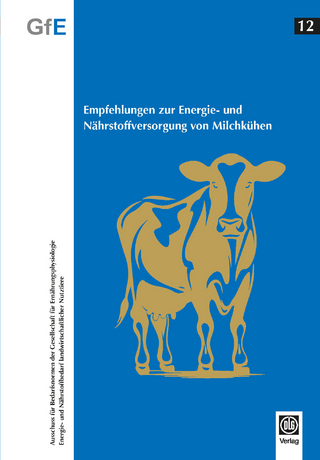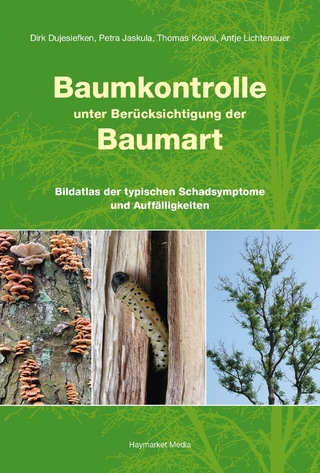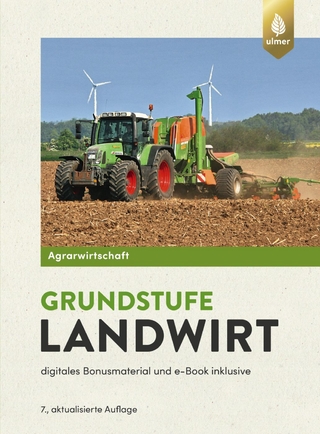Characterization of Japanese soil-borne wheat mosaic virus movement protein and investigation of interacting host-plant factors
Seiten
2023
Bundesforschungsinstitut für Kulturpflanzen (JKI) (Verlag)
978-3-95547-128-6 (ISBN)
Bundesforschungsinstitut für Kulturpflanzen (JKI) (Verlag)
978-3-95547-128-6 (ISBN)
The Japanese soil-borne wheat mosaic virus (JSBWMV) is a cereal virus infecting barley as well as wheat. The virus belongs to the genus Furovirus and is transmitted by the obligate biotrophic root parasite Polymyxa graminis. For the agriculturally important crop barley, no resistances against JSBWMV or its vector P. graminis are known. In this work the infection of the bipartite positive-stranded RNA virus JSBWMV was investigated to understand the interplay between the virus and the host-plant. Nicotiana benthamiana was used as model host. For the viral life cycle the movement of the virus over short distances as well as long distances is important to efficiently establish infection. Viruses encode “movement proteins” (MP) which facilitate the movement processes. For the JSBWMV MP, belonging to the 30K MP-family, a localization to plasmodesmata and to punctuate spots in the plasma membrane was observed. The importance of MPs for intercellular transport of viruses and protection of viral RNA are supported by these results. At both cellular localizations a self-interaction was revealed, which was not shown for a furoviral MP before. To understand the interplay of the virus with the plant cell, interacting RNA and proteins were identified using co-immunoprecipitation (IP) techniques. The experiments showed that the MP interacts with RNAs, which potentially encode transcription factors. Two interacting plant proteins were identified and the interaction was confirmed in further experiments. The potential P-type “pentatricopeptiderepeat-containing protein” (PPR) localized to two distinct subcellular localizations. The C-terminal tagged PPR localized to the chloroplast, while a distribution to the cytoplasm and to plasmodesmata was observed for the N-terminal tagged PPR. RNA-IPs identified interacting RNA-molecules and indicated that the PPR-protein possibly plays a role in regulating mRNA in the chloroplast. The “heat shock protein 70” (HSP70) is a chaperone and experiments displayed a cytoplasmic and nuclear localization. The protein is upregulated in response to the over-expression of the JSBWMV MP and RNA-IP-experiments highlight the role of HSP70 in the plant defense. Interestingly, RNAs interacting with both, MP and HSP70 allowed establishing a link between these two proteins and beta-1,3-glucosidase, one of the main regulators of plasmodesmata size exclusion limit. The results obtained for the JSBWMV MP and the host-plant interacting proteins PPR and HSP70 allow a deeper insight into the interaction of MP with the host cell in the viral infection. This knowledge may in the future be developed into new resistance strategies against JSBWMV. Das japanische bodenbürtige Weizenmosaik Furovirus (JSBWMV) infiziert neben Weizen auch Gerste. Es wird von dem obligaten Wurzelparasiten Polymyxa graminis übertragen. In Gerste sind sowohl gegen das Virus als auch gegenüber dem Vektor P. graminis keine Resistenzen bekannt. Um die Infektion des zweiteiligen RNA-Virus besser zu verstehen, wurde in dieser Arbeit die Wechselwirkung zwischen dem Virus und der Modellpflanze Nicotiana benthamiana untersucht. Die Ausbreitung des Virus von Zelle zu Zelle und über längere Distanzen ist wichtig für das Virus, um die Infektion zu etablieren. Um sich in der Pflanze verbreiten zu können, exprimieren Viren sogenannte „movement proteins“ (MP). Für das MP des JSBWMV, welches zur 30K MP-Familie gehört, wurde in dieser Arbeit eine Lokalisation an Plasmodesmen, den Zell-Zell Kontakten zwischen Pflanzenzellen und an Punkten in der Plasmamembran gezeigt, bei der ebenfalls eine Interaktion des MP mit sich selbst beobachtet wurde. Die Bedeutung von MPs für den interzellulären viralen Transport und Schutz der viralen RNA werden durch die Ergebnisse unterstützt. Um Erkenntnisse über die Interaktion zwischen dem JSBWMV MP und der pflanzlichen Zelle zu erlangen, wurden MP-interagierende RNAs und Proteine identifiziert. Für das JSBWMV MP wurden bindende RNA-Moleküle identifiziert, welche für potentielle Transkriptionsfaktoren kodieren. Zwei interagierende Proteine wurden mittels Massenspektrometrie gefunden und die Interaktion konnte in weiteren Experimenten bestätigt werden. Das „pentatricopeptiderepeat-containing Protein“ (PPR), gehört wahrscheinlich zur P-Klasse der PPR-Proteine. Für das N-terminal Fluoreszenz-markierte PPR wurde eine Lokalisation im Zytoplasma und an Plasmodesmen beobachtet, während für das C-terminal Fluoreszenz-markierte PPR eine chloroplastidäre Lokalisation gezeigt wurde. Das PPR-Protein spielt möglicherweise eine Rolle in der Regulation von mRNA in den Chloroplasten. Darauf deuten RNA-Immunpräzipitationen (RIPs) hin, in denen interagierende RNA-Moleküle identifiziert wurden. Das „heat shock protein 70“ (HSP70) gehört zu den Chaperonen und eine zytoplasmatische und eine Kern-Lokalisation konnte experimentell beobachtet werden. Eine erhöhte Expression vom HSP70 in N. benthamiana als Reaktion auf die über-Expression von JSBWMV MP wurde gezeigt. RIP-Experimente weisen auf die Rolle des HSP70 im pflanzlichen Immunsystem hin. Als Interaktionspartner von HSP70 als auch MPJSBWMV wurden beta-1,3-Glucosidase RNAs identifiziert. Beta-1,3-Glucosidasen sind Hauptakteure in der Regulation der Plasmodesma-Öffnungsweite und stellen einen Link zwischen den beiden Proteinen und Plasmodesmen her. Die erlangten Ergebnisse über die Wechselwirkung zwischen dem MP vom JSBWMV und den pflanzlichen Interaktionspartnern PPR und HSP70 geben Einblicke in das Infektionsgeschehen von JSBWMV. Die Erkenntnisse können in Zukunft dafür genutzt werden, neue Abwehrstrategien gegen das Virus in der Pflanze zu entwickeln.
| Erscheinungsdatum | 14.04.2023 |
|---|---|
| Reihe/Serie | Dissertationen aus dem Julius Kühn-Institut |
| Zusatzinfo | Illustrationen, Diagramme |
| Sprache | englisch |
| Maße | 140 x 210 mm |
| Gewicht | 200 g |
| Themenwelt | Naturwissenschaften |
| Weitere Fachgebiete ► Land- / Forstwirtschaft / Fischerei | |
| Schlagworte | Getreide • Hordeum vulgare • Pflanzenkrankheiten |
| ISBN-10 | 3-95547-128-4 / 3955471284 |
| ISBN-13 | 978-3-95547-128-6 / 9783955471286 |
| Zustand | Neuware |
| Informationen gemäß Produktsicherheitsverordnung (GPSR) | |
| Haben Sie eine Frage zum Produkt? |
Mehr entdecken
aus dem Bereich
aus dem Bereich
Buch | Hardcover (2023)
DLG-Verlag
79,90 €
Buch | Hardcover (2023)
Haymarket Media (Verlag)
31,80 €




